#Florida pollinators
Explore tagged Tumblr posts
Text
These Colorful Little Hoverflies are Also Great Pollinators
Northern Plushback One of the pollinators that I’ve been seeing lately that I was not familiar with is the pretty little northern plushback (Palpada vinetorum). It’s a type of hoverfly that is found in the eastern United States and Texas. It’s especially common in coastal or near coastal areas. The adults feed on nectar and prefer to go directly onto or into the corolla of the flower. The hairs…
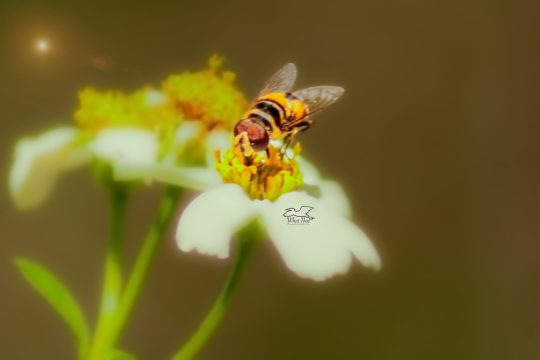
View On WordPress
#colorful flies#colorful insects#flies#Florida flies#Florida insects#Florida pollinators#fly photographs#hoverflies#insect photographs#insect photography#insects#northern plushback#northern plushback fly#photography#pollenators#pollinating insects#small flies#small insects#spring insects
2 notes
·
View notes
Text



#photography#original photographers#nature#photographers on tumblr#florida#cottagecore#flowercore#flowers#pollinators#native pollinators#artists on tumblr
64 notes
·
View notes
Text

Dryas iulia on Aloysia virgata / Julia Heliconian on Sweet Almond Bush at the Peace River Botanical & Sculpture Gardens in Punta Gorda, FL
#Dryas iulia#Dryas#Nymphalidae#Aloysia virgata#Aloysia#Verbenaceae#Julia Heliconian#Julia butterfly#Flame#Flambeau#Sweet Almond Bush#Sweet Almond Verbena#butterflies#Native insects#Native pollinators#Insects#Pollinators#Plants#Foliage#Nature photography#photography#photographers on tumblr#Peace River Botanical & Sculpture Gardens#Peace River#Punta Gorda#Punta Gorda FL#Florida#🌺🌻
18 notes
·
View notes
Text

#butterlies#insects#pollinators#pollination#nature hikes#photography#florida#original photographers#naturecore#cottagecore#nature photography#woods#photographers on tumblr#nature
37 notes
·
View notes
Text
One thing I've found important but also sometimes difficult to learn is that the difference between a 'butterfly garden' and a 'biodiverse habitat' is that you gotta accept that sometimes things are gonna die.
This isn't to say that you shouldn't try to tend to things. If I find a bunch of oleander aphids harassing some of my young milkweed plants, I'll get the hose and spray them off no problem--hard to tend a garden and save milkweed seeds if they're getting the life sucked out of them before they can even go to seed. If I see a lot of snails starting to devour some of my flowers and turn them into brown mush, I'll pick them off and toss them to the neighborhood ducks.
But with that being said, creating a biodiverse environment for wildlife means there's gonna be prey animals and predator animals, and some insects may fill several niches. I plant milkweed and other flowers so monarchs and other insects can enjoy them as a host plant and a nectar source. Some years, I can barely even find large caterpillars because the wasps just go ham and pig out. That doesn't mean I'm gonna hunt down any and every wasp nest and spray it to death for being oh-so-mean to my precious baby caterpillars! They're just trying to survive, just like everything else in my garden!
And in the grand scheme, everything is part of a cycle that feeds everything else. The caterpillars feed the wasps, which then feed the cardinals and chickadees and mocking birds. Later in the summer, I always see some ladybugs, and my aphid problems drop even without me bringing out the hose. Sure, the snails are a major problem for me, right now. But they might be feeding things I'm not even seeing, late at night--like blindworms, or possums, or frogs, and maybe even the birds are going at them when I'm not outside.
The literal basis of my pollinator garden is so things can eat other things--the caterpillars feed on the milkweed, after all. I can't deny that they're part of an ecosystem, and the effort in trying to just sprays poisons everywhere for no real reason.
If I really wanted to, I could try and collect every single tiny little baby caterpillar and keep them in a little container, so I can rear them by hand, if it hurts too much to think of them getting eaten by wasps. My next door neighbor did that. Brought in 26 caterpillars to protect them from outside enemies, and promptly ran out of milkweed. Out of all that, only maybe 10 tops made it. And the instant she set out her stripped-bare plants again, there were already more monarchs coming in and laying seeds on the stems of plants that just barely were starting to leaf back out.
Nature's a balancing act. Monarchs have been dealing with pests like wasps through all this time. Every time I wonder where the caterpillars are, I sure can still find a few dozen eggs on my plants. Butterflies are still dropping by, still laying tons of eggs on my plants. And it's not like I go out there five times a day to count caterpillars--for all I know, there could still be dozens of those little guys growing up where I don't even see them.
I feel like I'm losing my point. Long story short, if wasps are eating some caterpillars in my backyard, I'm not gonna lose my mind. I want my garden to be part of a wider ecosystem, not a members-only club.
#ani rambles#out of queue#pollinator gardening#'but Ani if you don't mind things dying in your garden why are you killing snails' I spent MONEY on those plants#and they're always my non-milkweed favorites they're going after!!!#coneflowers rudbeckias zucchini squash foxglove I'm not allowed to have nice things because of those fuckers#am I being a bit unfair to them???? maybe#but also you try picking off 100 goddamn snails from your fuckin flowers after a rainy day and see how you feel#'ani make your garden less moist to handle the snail problem' I live in FLORIDA#if I don't water things'll bake OR it'll just rain anyways for three days straight and all of a sudden my rudbeckias are dead#I need to attract some goddamn snail eating frogs but until then im putting them in a bucket and feeding them to#the ducks that live in my neighborhood
47 notes
·
View notes
Photo
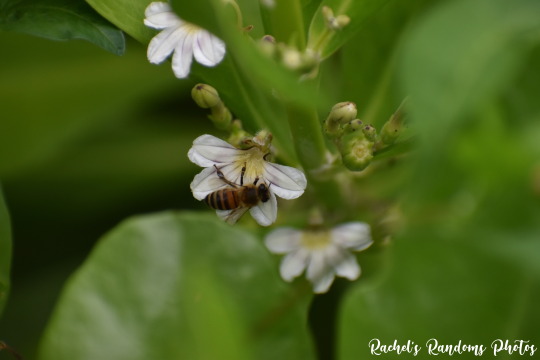
Honey bee (Apis) on a Sea Lettuce Tree (Scaevola taccada)
Taken at Pineapple Park in Melbourne, FL
#honey bee#honey bees#bee#bees#insect photography#insects#insect#pollinator#pollinators#plant#plants#plant photography#flower#flowers#flower photography#nature photography#photography#florida#florida photography#florida photographer#nikon photography#nikond3500#wildlife
14 notes
·
View notes
Text
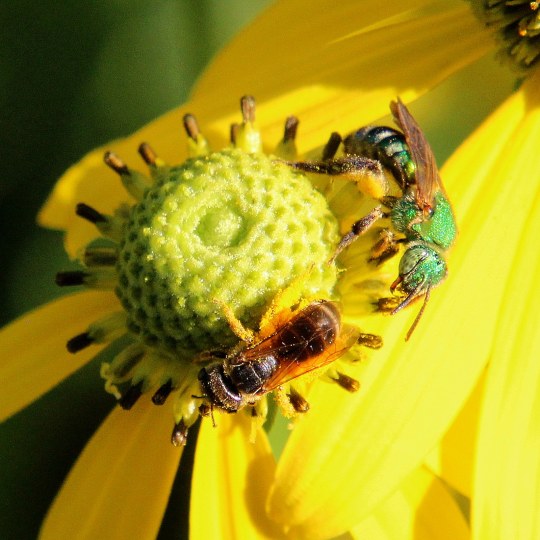
Photo: LDeans
2 notes
·
View notes
Text

#passion fruit#passiflora#may pop#passion flower#Florida#Tampa#Tampa bay#tropical#tropical fruit#pollinating#fruit#Spotify#passiflora edulis#passionfruit#Zone 10A
0 notes
Text
Leafcutter Bees: these bees snip off bits of foliage and/or flower petals and then weave the pieces together to build their nests
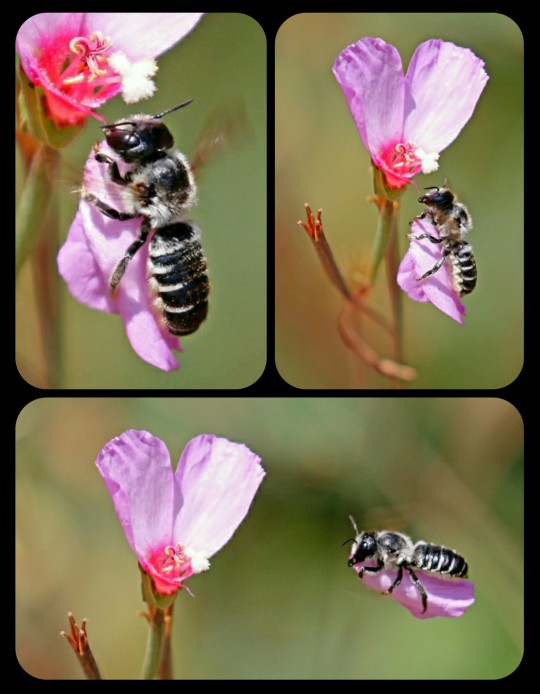
The nests are built and used only by the female leafcutter bees (family Megachilidae). Unlike honey bees, leafcutters do not form colonies or live together in hives, meaning that each nest belongs to a single, solitary bee.
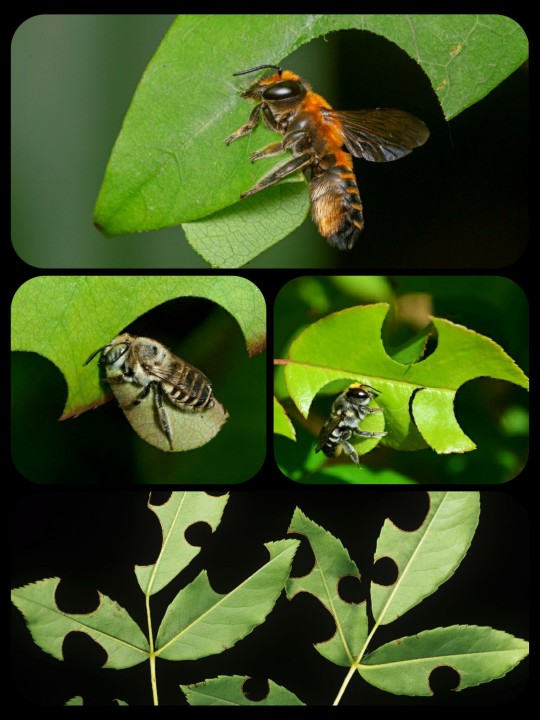
The females use their mandibles to cut out pieces of foliage, carefully snipping off rounded segments and then carrying them back to an existing cavity/burrow (which may be located in a plant stem, a piece of wood, the side of a tree, etc.), where the pieces are used to construct a series of brood cells along the inner walls of the cavity.
Most leafcutter bees build their nests out of leaves, but there are some species that are more accurately described as "petalcutters," because they use flower petals instead.
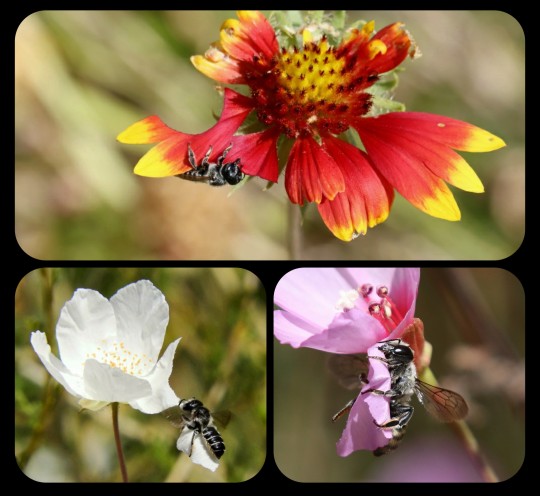
The Silver-Tailed Petalcutter Bee (M. montivaga): this species uses flower petals to build its nest; it is one of the few Megachilid bees to do so
The leaves and/or flower petals are then folded together along the inner walls of the chamber, forming a long, cigar-shaped nest that contains multiple brood cells.
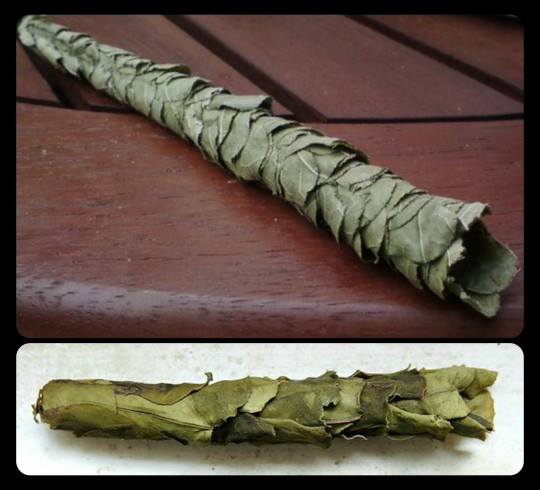
As this article explains:
Leafcutter bees may nest in many different spaces, such as existing holes in timber or masonry, hollow stems, gaps in door/window frames, old folded towels left outside, rock walls and outdoor furniture.
Each female builds her own nest. The cut leaves are used to make a tube as a nest for the eggs or to line an existing hole with it. The leaves are cut in various shapes, round and elongated, to suit the construction of the cell for the eggs. The cell is then stocked with a mixture of nectar and pollen in which the leafcutter bee lays her eggs.
There are multiple brood cells built into the internal structure of the nest, but they are all separate from one another. Each cell contains a single egg, along with just enough pollen and nectar to sustain the larva until it reaches maturity.
When the eggs hatch, tiny larvae eat the provisions and, when fully grown, they spin silky cocoons and then develop into pupae, finally emerging as adult bees.
Leafcutter bees come in a wide variety of colors, shapes, and sizes. These are just a few other examples:
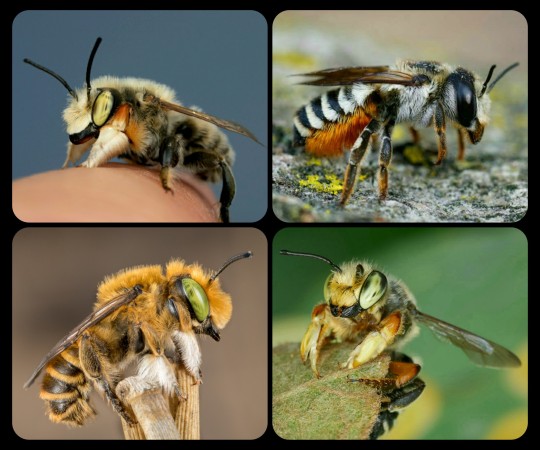
Top Row (left-to-right): Megachile latimanus and Megachile octosignata; Bottom Row: Megachiloides sp. and Megachile poeyi
Sources & More Info:
University of Colorado's Museum of Natural History: Leafcutting Bee
Florida Wildflower Foundation: Getting to Know your Native Pollinators - Leafcutter Bees
University of Nebraska: Facts about the Leafcutter Bee
Land for Wildlife (Southeast Queensland): Leafcutter Bees
What's that Bug?: Leafcutter Bee Life Cycle - a Fascinating Journey Revealed
Entomology Today: Beyond the Honey Bee - How Pesticides Affect Solitary, Cavity-Nesting Bees
#entomology#insects#nature#hymenoptera#arthropods#megachile#megachilidae#leafcutter bees#petalcutter bees#animals#biology#flowers#cute bugs#bees#solitary bees#gardening#plants#cute animals#bugs that like to pick flowers#to decorate their homes
65 notes
·
View notes
Text
Bumblebees are Interesting and Great for the Environment
Out of the Fog It’s the time of year where we have quite a few foggy mornings. They’re most likely to happen after a cool night that starts warming up quickly as the sun rises. One morning while I was getting out of my yard, this eastern bumblebee (Bombus impatiens) was flying around me. I’m not sure why, but it wouldn’t leave, so I decided to try to get some photos of it. There was fog in the…
#bee photographs#bee photography#bees#bumble bee photographs#bumble bee photography#bumblebees#common bumblebees#common eastern bumblebee#eastern bumblebee#Florida bees#Florida bumblebees#Florida insects#Florida pollinators#insect photographs#insect photography#insects
0 notes
Text

#photography#original photographers#nature#photographers on tumblr#florida#cottagecore#forest#bugs#native pollinators#beetleposting#milkweed#flowercore#flowers
38 notes
·
View notes
Text

Danaus plexippus / Monarch at the Peace River Botanical & Sculpture Gardens in Punta Gorda, FL
#Danaus plexippus#Danaus#Nymphalidae#Monarch#monarch butterfly#Caterpillar#butterflies#Native insects#Native pollinators#Insects#Pollinators#Nature photography#photography#photographers on tumblr#Peace River Botanical & Sculpture Gardens#Peace River#Punta Gorda#Punta Gorda FL#Florida#🌺🌻
10 notes
·
View notes
Note
Oh venus fly traps are very cool, they live / exist in a very (very very very very very) small area of north/south carolina (Its like a 60 mile radius of Wilmington NC) now a days its slightly larger but not really, theres a bog/swamp in florida that has a naturalized group of them but yeah the original range is the costal swamps of North/ South Carolina. Which is why they evolved to be carnivorous plants due to lack of nitrogen in the soil! They still get pollinated their flower is just like way above it! They can also become un-carnivorous if someone owns it and has too much nitrogen itll stop eating insects but still grow the traps because those functionally are like leaves, they grow new ones as needed!
They also NEED FIRE! Its the only way its seeds germinate!
Theyre also ENDANGERED! Theres roughly 300,000 (per a survey in 2019) of them in its native area. Which from the last full survey of them back in 1979 which said theres about 4,500,000 of them thats a 93% REDUCTION of their population. and the areas that it now populates only 21/70 sites they are found point towards being viable for the future.
Im just very passionate about venus fly traps, i have lots of family from north carolina so things from there are special to me. ❤️
Whawhawhaaat!!! Man, this is awesome! Thank you so much anon, I don't know much anything about venus flytraps but now I do! In my mind, venus flytraps were sort of like a fictional plant, even though I knew they were real as I've seen them for myself, they're just so... I don't know how to say it. Intangible, often talked about separately from the world we inhabit? I never knew where they actually grew, or if they're flowering plants, or that they need fire to germinate their seeds!!! Like, that's a real plant! Now that this connection to the places and ecosystems it inhabits has been established in my mind does it actually become cooler :D
How sad that they are endangered though! Must be a combination of habitat loss and perhaps overharvesting, since they are popular plants and probably popular to own too :/ I hope that there are protective measures taken to conserve this unique plant and its valuable ecosystem; coastal swamps and wetlands in general are so important! At the end of the day raising awareness is very important and that's what you did anon, thank you again :)
81 notes
·
View notes
Note
As a Texan, seeing Florida become the new scapegoat for “states we want to get rid of while ignoring the people there actually suffering” is a big yikes. I feel for y’all over there, and I’ve felt the same way for a long time. I like living here, but the politicians passing hugely discriminatory laws are making it an increasingly difficult struggle
I appreciate it. <3
Genuinely, if my family does wind up having to leave, I'm going to grieve the loss of my home the same way I would grieve the loss of a loved one. I gave up everything to get back here after living out-of-state for a decade, and a significant sense of my cultural identity is tied to this place.
The gators, the hurricanes and the hurricane parties, the swamps, the rivers, the prairies, the bogs, all the forests and wetlands and the creatures that live in them...this place is my home. This environment is the one I know best. I've learned our native wildlife and our native plants, I know our birds and our pollinators, I know our history, I know the local culture, I know whose land I live on and have fallen so desperately in love with over the course of my life.
I don't want to leave. I don't want to give up on my home. But for some reason, people keep acting as if I should be "relieved" to "finally have a good reason to leave," as if I'm not in constant mourning for what has already happened to this place.
216 notes
·
View notes
Text
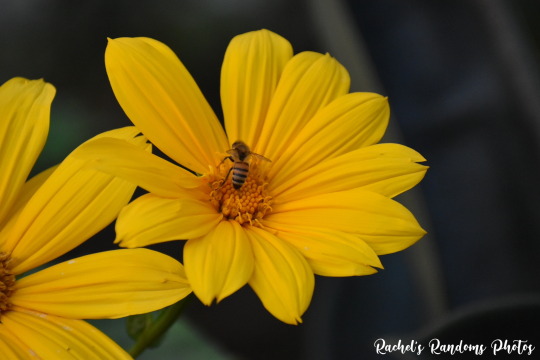
Honey Bee (Apis mellifera) on a Mexican Sunflower (Tithonia rotundifolia)
Taken in my front yard
#honey bee#honey bees#bees#insect photography#bugs#bug photography#animals#animal photography#wildlife#wildlife photography#nature#nature photography#pollinators#photography#florida#florida photograhy#florida photographer#mexican sunflowers#flowers#flower photography#plants#plant photography#nikon camera#nikon photography#nikon d3500#Tithonia rotundifolia#Apis mellifera
1 note
·
View note
Text


The golf course on Dominic's base was shut down in 2020. It skirts the Alabama River, and it is way more beautiful grown wild than it ever was as a golf course, but then I like pollinators and I don't play golf.
I've had a wild and crazy week. Driving to Florida and back to vote, meeting with students every day for conferences, holding a 3-hour meeting for my mentorship gig last night. And while I still have plenty to do, I decided to play hooky today, and I joined Dominic for a walk along the golf course, and then we ate at the delightful meat and three in our old neighborhood.
This week has exhausted me, but I got through it, and the week before that, and the week before that too. And I guess I'll just keep going along this way, getting through the weeks one at a time.
12 notes
·
View notes